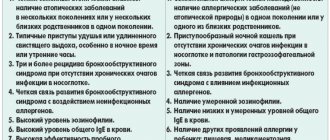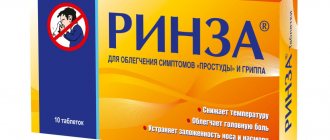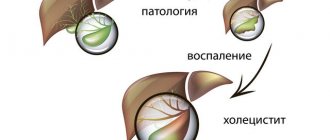Meningococcal infection
Treatment should be started immediately . The first medical aid to the patient must be provided by the doctor who first suspected or diagnosed meningococcemia. The patient needs to be administered chloramphenicol succinate 25 mg/kg IU (single dose) + prednisolone 2-3 mg/kg. It is preferable to administer these drugs intravenously, since if microcirculation is impaired, intramuscular administration of antibiotics and hormones is not effective. If there are signs of ITS, the main treatment is the use of massive doses of corticosteroids from 5 to 20 mg/kg, replenishment of the circulating blood volume (administration of drugs only intravenously).
It is necessary to hospitalize the patient as quickly as possible. Patients with generalized forms of meningococcal infection or with suspicion of them are subject to emergency hospitalization in a specialized department of an infectious diseases hospital by an emergency medical team. If there are signs of ITS - by the resuscitation team.
With a progressive deterioration of the patient’s condition, hospitalization to the nearest intensive care unit is indicated, and only after stabilization of the patient’s condition, transfer to a specialized hospital.
Patients with generalized forms of MI or suspected of them are subject to mandatory hospitalization. On an outpatient basis, only patients with localized forms can be treated: meningococcal carriers and nasopharyngitis with a mild and short-term course in the absence of preschool children or childcare workers in the family.
Treatment of patients in a hospital is carried out according to the protocol (Order of the Ministry of Health of Ukraine No. 354 of July 9, 2004 “On the approval of protocols for the diagnosis and treatment of infectious diseases in children”):
I. Nasopharyngitis Antibacterial therapy: – rifampicin – 10 mg/kg per day for 3-5 days or macrolides (erythromycin, spiramycin, azithromycin), or levomycin.
II. Meningococcal carriage - rifampicin - 2-3 days.
III. Purulent meningitis Prehospital stage of treatment: – ensuring venous access; – antibacterial therapy – chloramphenicol succinate – 25 mg/kg (single dose); – glucocorticoids – 1-3 mg/kg for prednisolone; – infusion therapy with saline and colloid solutions; – antipyretics; – furosemide – 1-2 mg/kg; – for convulsions – diazepam (inpatient stage of treatment); – antibacterial therapy: benzylpenicillin – 300-500 mg/kg administered 6 times a day (reserve antibiotics: ceftriaxone – 100 mg/kg per day, cefotaxime – 200 mg/kg per day; if there are signs of ITS – chloramphenicol succinate – 100 mg/ kg per day; - detoxification therapy for moderate forms using glucose-saline solutions; - diacarb + asparkam. The dose is selected depending on the severity of the hypertension syndrome; - syndromic therapy; - during the period of convalescence: nootropics, B vitamins.
IV. Meningococcemia Prehospital stage of treatment: – ensuring venous access; – antibacterial therapy; – chloramphenicol succinate – 25 mg/kg (single dose) intravenously; – glucocorticoids – prednisolone, hydrocortisone or dexazone – 2-3 mg/kg for prednisolone – without ITS (for ITS grade 1 – 5 mg/kg, 2nd – 10 mg/kg, 3rd – 15-20 mg/kg kg); – infusion therapy with saline solutions or rheopolyglucin to stabilize the bcc; – inotropes (dopamine) – to maintain hemodynamics (inpatient stage of treatment); – depending on the severity of the condition, hospitalization of the patient in the intensive care unit or in the department of neuroinfections of an infectious diseases hospital; – antibacterial therapy: in the presence of ITS, the drug of choice is chloramphenicol succinate at a dose of 100 mg/kg per day (when removing a patient from ITS, penicillin 200 mg/kg per day or cephalosporins 100 mg/kg per day are prescribed). In severe cases and the need to protect against nosocomial infection, 3rd generation aminoglycosides are additionally used - amikacin - up to 20 mg/kg per day, netilmicin - 1.5-2.0 mg/kg every 8 hours; – detoxification therapy for moderate forms is carried out with glucose-salt solutions, taking into account the daily fluid requirement and pathological losses; – syndromic therapy – according to the appropriate treatment protocols. Patients are discharged based on clinical recovery after normalization of laboratory parameters of the cerebrospinal fluid and general blood test. A control swab from the nasopharynx is taken in the hospital no earlier than three days after antibacterial treatment.
Consequences of generalized forms of meningococcal infection Clinical and laboratory studies have shown that upon discharge from the hospital, the majority of patients have not yet achieved complete restoration of all impaired functions. Children who have had purulent meningitis must be registered with a neurologist for 2-3 years.
It is advisable not to send children to child care institutions during the first 2-3 weeks after discharge.
The most common consequence of meningococcal infection is cerebrasthenic syndrome, manifested by increased fatigue, sleep disorders, appetite, decreased academic performance, and changes in behavior. For younger children, emotional instability, motor disinhibition, absent-mindedness, and sometimes aggressiveness are more typical.
If cerebrovascular disease is detected, the child must be provided with a gentle regime, proper organization of work and rest, limiting the time of watching TV and working with the computer to a minimum, increasing the time of sleep and spending time in the fresh air, and restorative therapy. During the recovery period, nootropics, multivitamins, and vascular medications are prescribed under the control of Dopplerography of cerebral vessels.
Complications and consequences
During illness, the following complications may occur:
- cerebral edema;
- hydrocephalus;
- hemorrhagic cerebral stroke;
- acute renal failure;
- paralysis and other dysfunctions.
Against the background of meningococcal infection, herpes, otitis media, and meningococcal pneumonia can develop. Severe disease can cause the development of asthenic syndrome, expressed in general weakness and periodic headaches. Lead to arterial hypertension, hearing loss, epilepsy and hemiparesis (paralytic damage to one side of the body). Patients who have had meningococcal infection often experience apathy and depression.
Characteristic features of the rash
A skin rash with meningococcal infection is an important diagnostic sign. Its absence in most cases indicates a different nature of the disease.
A rash with meningococcemia appears on the first day from the onset of the disease, and the earlier the first elements are formed, the worse the prognosis. Elements of the rash are localized mainly on the legs, buttocks, thighs, and hands.
The rash initially has a maculopapular character, but then quickly acquires a hemorrhagic appearance. Individual elements have an irregular star shape, their size from a couple of millimeters to several centimeters. Upon palpation, you can notice that the rash is dense and slightly raised above the skin. In severe cases, the hemorrhagic rash spreads to the entire body, the elements merge and form extensive hemorrhages.
The rash is rarely found on the face; isolated elements are found on the earlobes and the tip of the nose. If meningococcal sepsis becomes fulminant, then the areas of the hemorrhagic rash merge with each other (usually on the extremities), forming a large affected area. This sign resembles the appearance of high boots or gloves, indicates the irreversibility of the changes, and the mortality rate is extremely high.
Hemorrhages can be located on the mucous membranes: on the conjunctiva, sclera, and in the oral cavity. The severity of skin lesions, the abundance of the rash, and the speed of its spread are important parameters for establishing the severity of an infectious patient.
Small rashes become pigmented after a while and then disappear completely. Large areas of skin damage are covered with a crust, which over time is torn off with the formation of a scar in this area. The development of gangrene and necrosis of the fingers and toes, hands and legs, feet, tips of the ears and nose is possible.
Fulminant form of the disease
The most severe form of meningococcal infection is fulminant. It is characterized by symptoms of infectious-toxic shock and high mortality.
Lightning generalization of the infection develops within several hours; in especially severe cases, death occurs within 3-5 hours from the appearance of the first symptoms.
Signs of the lightning form:
- It begins with a temperature rise of more than 40 degrees.
- Fever is accompanied by severe chills, pain in bones and muscles, and increased heart rate and breathing.
- The pressure depends on the stage of shock: at first it is normal or even elevated, but then steadily decreases.
- In the first hours of the onset of the disease, a profuse rash appears on the skin, which quickly spreads throughout the body. Large spots with a reddish-bluish tint are visualized. These spots shift when the patient's position changes.
- Gradually, shock moves into the stage of decompensation, when the body's systems can no longer adequately respond to massive intoxication.
- Against this background, there is a drop in temperature to normal values and lower, and pressure also decreases.
- The heartbeat and breathing become more frequent, and against the background of severe headache and intoxication of the body, consciousness is gradually lost.
- The skin is pale with a cyanotic tint.
- The patient experiences convulsions: at first they are short-term, observed in the calf muscles, and then become generalized.
- Diuresis gradually decreases, and anuria occurs in the terminal stage. Bleeding of internal organs may occur.
Death occurs for various reasons due to multiple organ failure and hemorrhages.
Advantages of JSC "SZDCM"
Laboratory tests are extremely important in the treatment, especially of such serious diseases. It is important to get not only the fastest, but also the most accurate and detailed result.
At your service:
- Laboratory with technological equipment.
- Qualified and friendly staff.
- Fast analysis and several options for obtaining results.
Medical centers and terminals are located in places with convenient transport links in St. Petersburg, Leningrad region, Veliky Novgorod, Staraya Russa, Okulovka and Pskov.
General information
Meningococcal disease is potentially fatal and should always be treated as a medical emergency. Causes meningococcal meningitis - this is a bacterial form of meningitis - and is a serious purulent infection of the membranes surrounding the brain and spinal cord.
Meningitis is caused by a number of different bacteria. One such bacteria that can cause epidemics is Neisseria meningitidis. Twelve serogroups of N. meningitidis have been identified, six of which (A, D, C, W135 and X) can cause epidemics.
The bacterium is transmitted from person to person through droplets of secretions from the respiratory tract or throat of the carrier. Close and prolonged contact, such as kissing, sneezing, coughing toward another person, or living in close proximity to an infected person (for example, in a shared bedroom or sharing utensils), helps spread the disease. Bacteria can be carried in the throat, and sometimes, for reasons that are not entirely clear, by overwhelming the body's defenses, the infection spreads through the bloodstream to the brain.
Despite remaining gaps in our knowledge, it is estimated that 10–20% of the population are carriers of N. meningitidis at any given time. However, in epidemic situations the number of carriers may be higher. In an epidemiological sense, carriers are the most dangerous, since there are 1200-1800 carriers per one sick person.
Disease Prevention
Post-infectious immunity. After an illness, a strong immunity develops that protects against re-infection. However, it occurs only in the serogroup of bacteria that caused the disease. In total, there are 12 types of meningococcal groups.
- Vaccination. 3 types of vaccines have been developed:
- Polyvalent polysaccharides (invented 30 years ago).
- Mono- and polyvalent conjugate vaccines (used since 1999).
- New monovalent conjugate vaccine MenA (developed in 2010-2011).
As much as possible, the drug can cover only 4 serogroups: A, C, Y and W. Unfortunately, such a vaccine has not yet been developed to protect against all types of infection.
The meningococcal vaccine is not included in the childhood vaccination schedule. You can only get vaccinated yourself. It should be carried out before traveling to countries at risk and for epidemiological reasons, i.e. during an epidemic when the serotype is known.
Effectiveness of vaccination
Vaccination is carried out once, the effectiveness is about 90%, immunity is formed on average within 5 days and lasts 3-5 years.
In December 2010, a new meningococcal group A conjugate vaccine was introduced throughout Burkina Faso and parts of Mali and Niger, where a total of 20 million people aged 1–29 years were vaccinated. Subsequently, in 2011, these countries reported the lowest ever number of confirmed cases of meningitis A during the epidemic season.
By the end of 2013, two years after the introduction of the MenAfriVac vaccine developed by WHO and PNTZ, 150 million people in African countries affected by meningitis A had been vaccinated. It is hoped that all 25 countries in the African meningitis belt will introduce this vaccine by 2021. With broad coverage of the target group aged 1–29 years, meningococcal A epidemics are expected to be eliminated in this region of Africa.
Chance of getting sick
The risk group includes children under 5 years of age. The peculiarity of the infection is that due to the presence of a protective capsule in meningococcus (as well as in Haemophilus influenzae and pneumococci), small children (1-5 years old) are unable to effectively develop immunity against natural infection. The result of this is that meningitis peaks in younger children. In our country, the incidence averages 5 per 100 thousand population per year, which is a fairly high figure compared to developed countries.
Latest epidemics
It is estimated that 80-85% of all cases in the meningitis belt are caused by group A meningococcus, and epidemics occur every 7-14 years. The highest rates of the disease are found in the meningitis belt of sub-Saharan Africa, stretching from Senegal in the west to Ethiopia in the east.
During the 2009 epidemic season, a total of 88,199 suspected cases, of which 5,352 were fatal, were reported in 14 African countries conducting enhanced surveillance. This is the largest number of victims since the 1996 epidemic.





